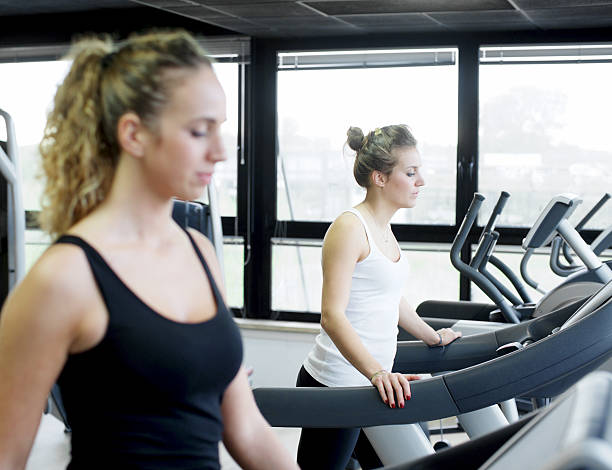A treadmill is great for exercising, especially for people
who cannot get outside to walk or run easily. Running on a treadmill is not the
same as running on the road, and people can injure themselves if they don’t
recognize the differences and make sure they are safe. Here are some ways to
avoid injury while using a treadmill.
Also Read: Jacky’s quest: 1 woman, 1 leg, 102 marathons in 102 days
Choose the Right Treadmill
Choose a treadmill that is well maintained to help reduce
the impact on your joints. Though treadmills are not as cushioned as grass or a
track, they are easier on your body than concrete. However, with time and use,
treadmills can lose some of their shock-absorbing capabilities. Test several
different treadmills at your gym and pick the one that provides a softer
base.
LISTEN TO YOUR BODY
People who join a gym or buy a treadmill on sale for their
home are often eager to lose weight or get into better shape. This enthusiasm
often causes the user to push their body further than they should, which can
cause strained muscles or shin splints. It is important for everyone who
exercises to start slow and increase their speed no more than 15% each week so
that their body gradually gets used to working out. Injuries are often caused
or exacerbated by increasing the speed or incline on the treadmill too quickly and
exercisers should stop their routine and rest for a day if their body doesn’t
feel right.
Walk, Don’t Run
Walk on the treadmill rather than run to prevent knee pain.
Brisk walking at a pace of 3 to 4 mph provides an efficient cardiovascular
workout that can also strengthen your legs and glutes. Start by walking for 20
to 30 minutes and gradually work your way up to 45 to 60 minutes, three to four
days per week.
Also Read: Here’s how to stay fit in your forties
Wear the Right Shoes
Wear proper walking or running shoes, depending on your
activity. The right shoes can help to absorb the shock and take pressure off of
your knees. Shoes should fit well, be cushioned and provide plenty of arch
support. Aspects such as the shape and size of your feet along with your
particular stride are important details to take into consideration when
purchasing walking or running shoes. Ask your foot doctor or an expert at your
local sporting goods store to recommend the right shoe for your body.
Cold muscles lack flexibility and blood flow, so it is
important to warm them up before putting stress on them through exercise. A
good warm-up may begin by walking slowly for 5-10 minutes and then performing
static stretches and range of motion exercises.
Cooling down the muscles is an important part of injury
prevention because muscles tighten quickly if activity suddenly stops. To
effectively cool down their muscles, exercisers should run or walk at a slower
pace for the last 10% to 15% of their time on the treadmill. They should also
stretch their hips, legs and lower back.
Practice Good Posture
Straighten your back and keep your torso centered over your
pelvis. Leaning forward, as is often seen with both walkers and runners, can
throw your posture off and make you move with improper form. Leaning forward can
also place greater stress on your knees. Instead, elongate your spine, slightly
lift your chest, keep your abdominal muscles pulled in to protect your lower
back and push the shoulder blades down and away from your ears.
Also Read: Avoid these 6 mistakes in your summer workout
How to Avoid Injury When Using a Treadmill | FAQs
WHERE CAN I GET A REPLACEMENT SAFETY KEY FOR MY
TREADMILL?
You can get a replacement safety key directly from your
treadmill manufacturer. Another option is to purchase a universal treadmill
safety key from Amazon or any sporting goods store.
WHAT ARE THE BEST TREADMILLS WITH LONGER ARM RAILS?
A few brands that offer treadmills with longer arm rails are
Landice, Sole and LifeSpan. Sometimes treadmills with longer arm rails are
referred to as medical or hospital treadmills, such as the LifeSpan TR8000i
Medical Treadmill.







